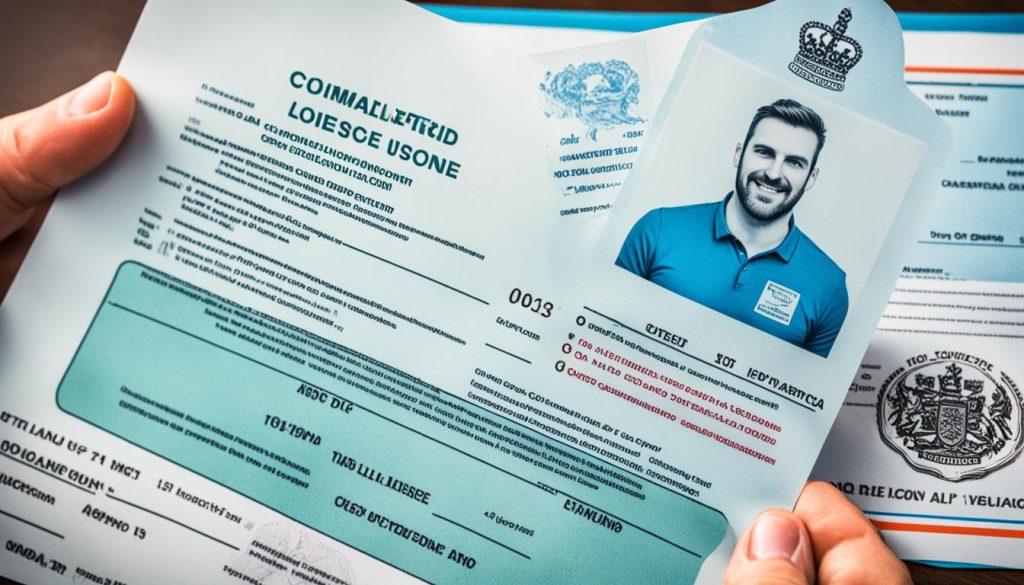Starting a taxi business in the UK can be a lucrative venture for those willing to navigate the regulatory landscape and meet the demands of a competitive market. From obtaining the necessary licenses to choosing the right vehicles, every step requires careful planning and execution.
In this comprehensive guide, “How to Start Your Taxi Business in the UK,” we will walk you through the essential steps and considerations to kickstart your taxi venture successfully. Whether you’re looking to operate a traditional black cab or a modern ride-hailing service, this guide will provide you with the knowledge and insights needed to navigate the complexities of the UK taxi industry. Join us as we explore the key aspects of starting and running a successful taxi business in the UK.
How to Start a Taxi Business in the UK?
Starting a taxi business in the UK can be an exciting and lucrative venture. The increasing demand for taxi services and the rise of ride-hailing apps present numerous opportunities for entrepreneurs in the industry. To embark on this journey, you’ll need to carefully plan and prepare your taxi company startup guide. This includes developing a comprehensive taxi business plan that outlines your goals, financial projections, and operational strategies.
One of the first decisions you’ll need to make is whether you want to operate a public hire or private hire taxi business. Each option has its own requirements and considerations. Public hire taxis, also known as hackney carriages, can be hailed on the street or picked up from taxi ranks without a prior booking. Private hire taxis, on the other hand, must be pre-booked through a licensed taxi booking office, website, or mobile app.
Once you’ve determined the type of taxi service you want to provide, you’ll need to obtain the necessary licenses and permits. This may include a taxi driver’s license, a vehicle license, and a taxi operator’s license, depending on your specific circumstances and the area you’ll be operating in. It’s crucial to familiarize yourself with the licensing requirements and regulations in your local area.
Choosing the right vehicles and equipment for your taxi fleet is another important aspect of starting a taxi business. You’ll want to select fuel-efficient cars that are comfortable and reliable for your passengers. Additionally, installing clear taxi signage and equipping your vehicles with a navigation system or a mobile phone mount can enhance the customer experience.
To attract customers to your taxi business, you’ll need to develop a strong marketing strategy. This might include creating a user-friendly website with online booking capabilities, partnering with popular ride-hailing apps like Uber, and utilizing social media platforms to promote your services. Local advertising through newspapers, radio, and billboards can also help reach your target audience.
Running a successful taxi business requires effective operations management and a strong focus on safety. This includes managing drivers, ensuring vehicle maintenance, and staying up-to-date with safety regulations. Providing excellent customer service and prioritizing passenger safety should be at the forefront of your business operations.
By following these steps and staying adaptable to market trends, you’ll be well on your way to establishing a successful taxi business in the UK. With careful planning and execution, you can navigate the challenges of the industry and position yourself for long-term growth and profitability.
Types of Taxis: Public Hire vs Private Hire
In the UK, there are two main types of taxis: public hire and private hire. Public hire taxis, also known as hackney carriages, can be hailed on the street or picked up from taxi ranks without a prior booking. Private hire taxis, on the other hand, must be pre-booked through a licensed taxi booking office, website, or mobile app. Private hire taxis cannot accept passengers who have not pre-booked and are not allowed to wait at taxi ranks. The rise of ride-hailing apps like Uber has made private hire taxis more popular, especially among younger customers who prefer the convenience of mobile booking and cashless payments.

Setting Up Your Taxi Business: Licensing and Requirements
Before starting your taxi business, you need to meet specific requirements and obtain the necessary licenses and permits. As an individual taxi driver, you must hold a valid UK or EU driving license that you have possessed for at least 12 months. Additionally, you will be required to undergo background checks, a skills test, and a medical examination.
If you plan to operate in specific areas, such as London, you may need to apply for a taxi or private hire vehicle license from your local council or Transport for London (TfL). It’s essential to familiarize yourself with the specific requirements and regulations in your area to ensure compliance.
If your goal is to operate a fleet of taxis, you will also need to obtain a taxi operator license. This license is necessary for overseeing the management and operations of multiple vehicles. Meeting the requirements for a taxi operator license typically involves demonstrating your ability to effectively manage a fleet, complying with safety regulations, and having suitable premises for your business operations.
Here is an overview of the key licensing and requirements for setting up a taxi business:
| Licensing and Requirements | Description |
|---|---|
| Taxi Driver Requirements | Valid UK or EU driving license for a minimum of 12 months |
| Taxi Business License | Taxi or private hire vehicle license from the local council or TfL |
| Taxi Operator License | License for managing and operating a fleet of taxis |
| Background Checks | Required for individual taxi drivers and employees |
Meeting these licensing and requirements is crucial to ensure the legality and compliance of your taxi business. By obtaining the necessary licenses and permits, you pave the way for a successful and reputable operation.

Choosing Your Vehicles and Equipment
One of the key considerations in starting a taxi business is choosing the right vehicles and equipment. When selecting vehicles for your taxi fleet, it is important to choose fuel-efficient cars that are reliable and comfortable for passengers. Popular models for taxis in the UK include the Hyundai Ioniq, Toyota Prius, and Skoda Octavia.
Fuel-Efficient Cars
Fuel efficiency is crucial for taxi businesses as it helps reduce operating costs and environmental impact. Opting for hybrid or electric vehicles can significantly lower fuel consumption and emissions. The Hyundai Ioniq, Toyota Prius, and Skoda Octavia are known for their excellent fuel efficiency, making them popular choices among taxi operators.
Taxi Signage and Identification
Installing adhesive door and body panels with your taxi business’s name and contact number is essential for branding and identification purposes. These panels should be prominently displayed on your vehicles to make it easy for customers to identify your taxis and contact your business.
Navigation Systems
A reliable navigation system or a mobile phone mount with navigation capabilities is crucial for efficient route planning. This ensures that your drivers can easily navigate to their destinations, saving time and improving customer satisfaction. Integrating GPS technology into your taxi fleet can also enhance driver safety and improve overall operational efficiency.
Additional Equipment
Other equipment to consider for your taxi fleet includes:
- Baby or Child seats: Providing baby or child seats in your taxis can cater to the needs of families and enable them to travel safely and comfortably.
- Wheelchair-Friendly Vehicles: Offering wheelchair-friendly vehicles ensures accessibility for passengers with disabilities and demonstrates your commitment to serving all members of the community.
- CCTV or Safety Screens: Installing CCTV cameras or safety screens in your taxis can enhance driver and passenger safety by deterring potential threats and providing video evidence in case of incidents.

Summary:
Choosing the right vehicles and equipment is crucial for the success of your taxi business. Opt for fuel-efficient cars that can reduce operating costs and minimize environmental impact. Install adhesive door and body panels with your business’s name and contact number for effective branding and identification. Invest in navigation systems or mobile phone mounts to ensure efficient route planning. Consider additional equipment such as baby or child seats, wheelchair-friendly vehicles, and CCTV or safety screens to cater to specific customer needs and enhance safety.
Marketing and Attracting Customers for Your Taxi Business
In order to attract customers to your taxi business, it is crucial to develop a comprehensive marketing strategy that effectively promotes your services and reaches your target audience. By employing various marketing tactics, you can increase your online visibility, drive online bookings, and establish a strong customer base.
1. Create a User-Friendly Website with Online Booking Capabilities
An essential component of your marketing strategy is having a user-friendly website that allows customers to conveniently book your taxi services online. Ensure that your website is easy to navigate, mobile-responsive, and equipped with a secure online booking system. This will provide customers with a seamless booking experience and encourage repeat business.
2. Partner with Ride-Hailing Apps
With the increasing popularity of ride-hailing apps like Uber, it is beneficial to partner with these platforms to expand your reach and attract new customers. By making your taxi services available through popular ride-hailing apps, you can tap into their user base and increase your chances of getting bookings from app users.
3. Utilize Social Media Platforms
Social media platforms provide an excellent opportunity to engage with your target audience and promote your taxi business. Create engaging and shareable content, such as informative posts, customer testimonials, and special promotions, to generate interest and encourage users to book your services. Regularly monitor and respond to customer inquiries and feedback on social media to build trust and credibility.
4. Local Advertising
Local advertising is a valuable method to reach potential customers in your area. Consider placing advertisements in local newspapers, airing radio commercials, and displaying billboards in strategic locations. Highlight your unique selling points, such as competitive prices, excellent customer service, and safe transportation, to differentiate your taxi business from competitors.
5. Encourage Customer Reviews and Testimonials
Positive customer reviews and testimonials play a significant role in building trust and attracting new customers. Encourage satisfied customers to leave reviews on platforms like Google My Business, Yelp, or your website. These reviews can help enhance your online reputation and influence potential customers’ decision to book your taxi services.
| Marketing Tactics | Benefits |
|---|---|
| Create a user-friendly website | Convenient online booking for customers |
| Partner with ride-hailing apps | Access to a wider customer base |
| Utilize social media platforms | Engagement with target audience and brand promotion |
| Local advertising | Increased visibility and awareness |
| Encourage customer reviews | Build trust and attract new customers |
By implementing these marketing strategies, you can effectively promote your taxi business, increase your online presence, and attract a steady stream of customers. Remember to continuously evaluate and adjust your marketing efforts to maximize their impact and stay ahead of the competition.
Managing Your Taxi Business: Operations and Safety
Running a successful taxi business requires effective operations management and a strong focus on safety. As the owner or manager of a taxi company, it is your responsibility to ensure that all aspects of your business are running smoothly and in accordance with safety regulations. This includes key areas such as driver management, vehicle maintenance, and adherence to safety regulations.
Driver Management
- Recruit and hire qualified and reliable drivers who possess a valid UK or EU driving license and meet the necessary requirements set by regulatory authorities.
- Conduct thorough background checks and periodically review driver records to ensure compliance with safety standards and regulations.
- Provide comprehensive training to drivers on customer service, safety protocols, and efficient route planning.
- Establish clear communication channels with drivers to address any concerns, provide support, and maintain a positive working relationship.
Vehicle Maintenance
- Implement a regular schedule for vehicle inspections and maintenance to ensure that all taxis in your fleet are in good working condition, safe, and reliable.
- Monitor vehicle mileage, tire condition, and fluid levels to identify maintenance needs and address them promptly.
- Collaborate with reputable auto repair shops and service providers to perform necessary repairs and maintenance tasks.
- Keep detailed records of all vehicle maintenance activities for compliance purposes and to maintain a reliable and well-maintained fleet.
Adherence to Safety Regulations
- Stay updated on the latest safety regulations and guidelines set by local authorities and regulatory bodies.
- Ensure that all vehicles in your fleet are equipped with necessary safety features, such as seatbelts, functioning lights, and safety screens.
- Regularly review and enforce compliance with safety regulations, including speed limits, traffic laws, and passenger capacity.
- Provide ongoing training and reminders to drivers regarding safety protocols and best practices.
By effectively managing your taxi business operations and prioritizing safety, you can build a reputation for reliability, attract more customers, and ensure the well-being of your drivers and passengers.

Conclusion
Starting a taxi business in the UK requires careful planning, execution, and a strong understanding of the industry. By navigating the various aspects of the business, such as obtaining the necessary licenses and permits, selecting the right vehicles and equipment, implementing a robust marketing strategy, and prioritizing operational efficiency and safety, you can position your taxi business for success.
One of the key factors in achieving success is staying adaptable and responsive to changing market trends and customer preferences. With advancements in technology and the increasing demand for taxi services, there are ample opportunities for growth and profitability in the taxi industry.
As you embark on your journey to start a taxi business, consider the valuable tips and insights shared throughout this guide. By staying committed to providing excellent customer service, offering competitive prices, and delivering reliable and safe transportation, you can differentiate your business and attract a loyal customer base.
Remember, starting a taxi business requires dedication, commitment, and continuous learning. Stay informed about industry best practices, seek opportunities to improve, and remain proactive in addressing any challenges that may arise. With the right mindset, strategies, and a focus on delivering exceptional service, you are well on your way to achieving success in the taxi industry.





